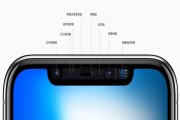 2018-01-04
2018-01-04
The iPhone X has sparked a heated discussion of 3D sensing technology in 2017, and Apple will continue to develop 3D sensing. On the other hand, vendors of Android smartphones will also follow the trend, pushing up the demand for Vertical Cavity Surface Emitting Laser (VCSEL), a key component for 3D sensing technology. Therefore, VCSEL manufacturers now race to lay the foundation in this segment.
Continue reading →
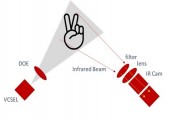 2018-01-04
2018-01-04
Apple has introduced 3D sensing modules in iPhone X for the first time, together with neural network embedded in its A11 chip. 3D sensing modules record three-dimensional data while A11 chip processes large amounts of data, allowing iPhone X to learn and identify a variety of facial details and expressions. The modules also ensure that users can be correctly identified even when their appearances change, making it more difficult to counterfeit.
Continue reading →
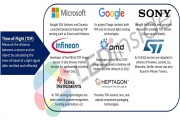 2018-01-03
2018-01-03
2018 just began but we already knew before that new technologies such as 3D sensing are going to be huge this year after the launch of Apple’s iPhone X last September. Using faces to unlock phones and personalize expressive Animojis are probably the two most memorable features that make 3D sensing widely known of among consumers. Surely, other phone makers will not let go of a chance to sport their products with similar capabilities, hence we learn the projection that the total value of the global market of mobile 3D Sensing is anticipated to grow at a CAGR of 209% from USD 1.5 billion in 2017 to USD 14 billion by 2020.
Continue reading →
 2018-01-03
2018-01-03
3D facial recognition has come into the spotlight after Apple’s introduction of Face ID in the iPhone X. Companies in the supply chain have also become the new focuses of inestors. In fact, 3D sensing technology has been around for years, but did not have commercial applications of facial recognition in smartphones until 2017. The reasons why it happened in 2017 can be explained in terms of components, modules andsubsystems, computing and systems, end-devices and applications.
Continue reading →
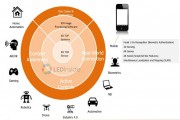 2018-01-02
2018-01-02
VCSEL (vertical-cavity surface-emitting laser) technology has been at the center stage in the tech world of late, in the wake of the debut of the new iPhone X, which contains a 3D sensing module with VCSELs as its core components. Their importance even made Apple fork over quite an amount of money to secure some of the VCSEL shipment from Finisar, a laser chip producer.
Continue reading →
 2017-11-27
2017-11-27
Famed KGI Securities analyst Ming-Chi Kuo said in his latest report that shipping estimates of the iPhone X have improved to 1-2 weeks in large part because of better-than-expected enhancements in the supply chain, rather than weak demand, reported MacRumors. The worldwide demand for the iPhone X remains strong.
Continue reading →
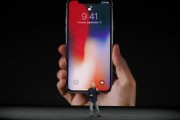 2017-09-14
2017-09-14
Well, it is not much of a surprise that the design and features of the iPhone X are largely in line with expectations. It, different from all previous iPhones, sports a full screen OLED display with a bit of ‘bangs’, where Apple puts the sensors, cameras, and the speaker. “For more than a decade, our intention has been to create an iPhone that is all display. The iPhone X is the realization of that vision,” said Jony Ive, Apple’s chief design officer.
Continue reading →
 2017-09-12
2017-09-12
EV Group (EVG), a supplier of wafer bonding and lithography equipment for the MEMS, nanotechnology and semiconductor markets, announced it has received multiple orders for its comprehensive portfolio of manufacturing equipment and services designed to address the burgeoning demand for wafer-level optics (WLO) and 3D sensing.
Continue reading →
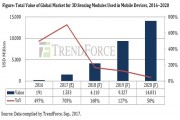 2017-09-11
2017-09-11
Major technology companies have been developing solutions and platforms for 3D sensing, which is expected to be featured on the upcoming iPhone devices. Market intelligence TrendForce anticipates that from 2017 onward, the market for 3D sensing solutions used in mobile devices will witness leaping growth. The total value of the global market for 3D sensing modules used in mobile devices is estimated to reach US$1.5 billion in 2017 and is forecast to grow at a massive CAGR of 209% to around US$14 billion in 2020. Note that the 3D sensing module that is being discussed includes IR transmitter and receiver components.
Continue reading →
 2017-09-11
2017-09-11
Taiwan-based LED chip giant Epistar’s revenue in August stood at NTD 2.332 billion (USD 77.59 million), with a rise of 3.7% MoM (5.3% YoY). It has hit a new high in the past 28 months. The company explained the fully-utilized capacity for blue LED manufacturing and the AlInGaP demand driver from the horticultural lighting market accounted for the growth, despite an overall slide of 0.3% YoY in the consolidated revenue of 2017 (accumulated until the end of August).
Continue reading →
 2017-08-30
2017-08-30
The Dow Jones Industrial Average yesterday said consumer electronics giant Apple will be holding its product launch event on 12th of September, as the Wall Street Journal carried in its report. Products to be unveiled are said to be the iPhone 8, the 10th anniversary edition exciting the public for long, the iPhone 7s, the iPhone 7s Plus, a new Apple TV box supporting 4K super high definition visual content, and an updated Apple Watch. Along with those products, the supply chains and technologies behind them have also been gradually revealed by various sources, even though Apple itself is very tight-lipped about it.
Continue reading →
 2017-08-23
2017-08-23
Apple’s development of 3D sensing highly interests the market. A list of companies joining Apple’s 3D sensing supply chain has been revealed in a recent report, which includes quite a number of Taiwanese firms, including TSMC, Largan Precision, Foxconn, Tong Hsing Electronic Industries, GSEO, Xintec, and VisEra.
Continue reading →
 2017-04-21
2017-04-21
Among the possible new technologies to be incorporated in this year’s refresh of the iPhone series, 3D sensing has generated a lot of interests in terms of applications. A 3D sensing solution requires an RGB camera module an infrared (IR) sensor module that uses VCSEL (vertical-cavity surface-emitting laser) as a light source. With more high-end smartphones adopt 3D sensing, TrendForce estimates that the worldwide market scale of IR sensor modules for mobile devices will reach US$145 million in 2017.
Continue reading →
 2018-01-04
2018-01-04
 2018-01-04
2018-01-04
 2018-01-03
2018-01-03
 2018-01-02
2018-01-02
 2017-11-27
2017-11-27
 2017-09-14
2017-09-14
 2017-09-12
2017-09-12
 2017-09-11
2017-09-11
 2017-09-11
2017-09-11
 2017-08-30
2017-08-30
 2017-08-23
2017-08-23
 2017-04-21
2017-04-21